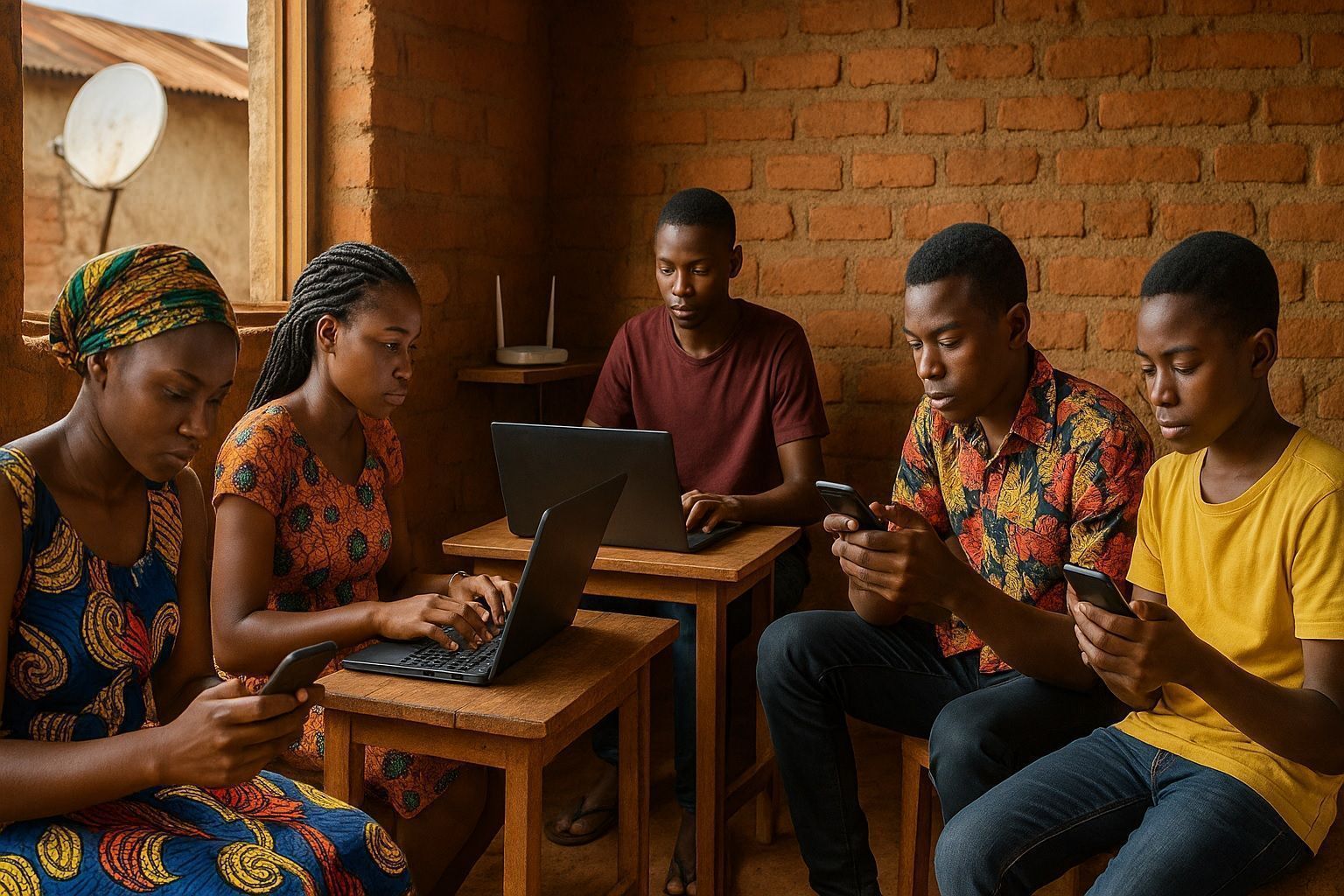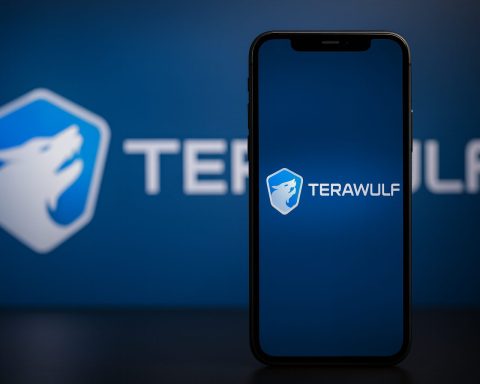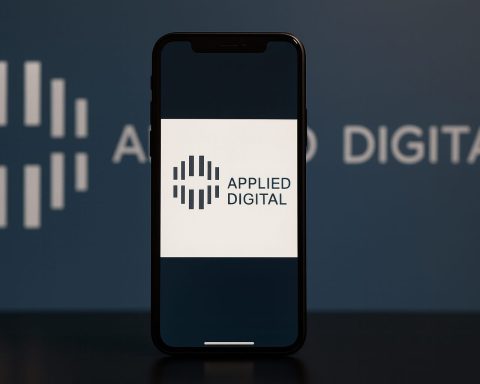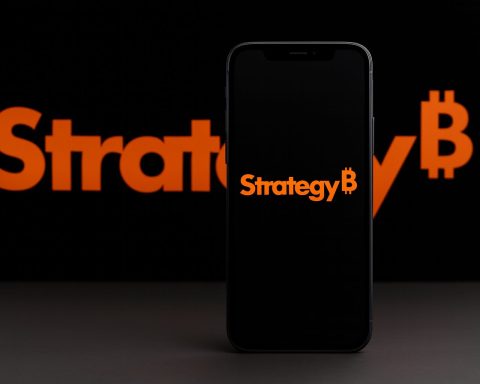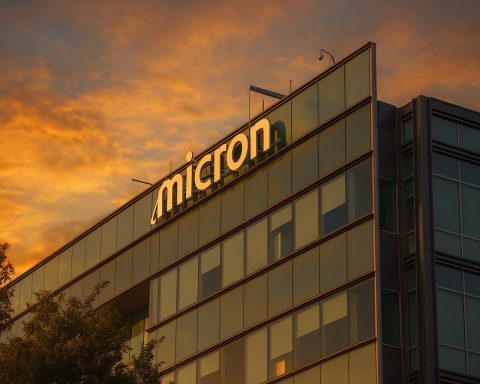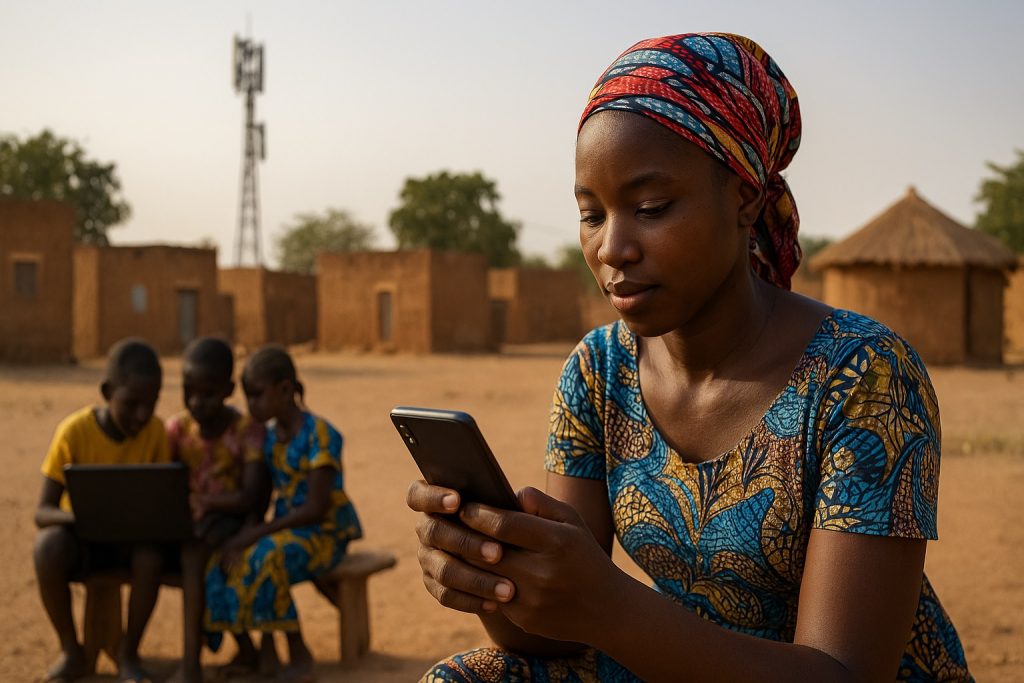- As of January 2025, Burundi had about 1.78 million internet users, roughly 12.5% of ~14 million people, leaving about 88–90% offline.
- About 99.6% of internet subscriptions are mobile broadband, while fixed broadband is virtually nonexistent with ~0.3% of homes wired and only about 3,000 fixed broadband subscriptions in 2023.
- 4G coverage reached about 32% of the population in 2023, 3G about 53%, while 2G covers around 97%, leaving many rural areas without true internet.
- The rural population accounts for about 84% of Burundians, and the government’s Universal Service Fund is rolling out 4G to 178 rural communities, aiming to reach about 786,000 additional rural residents by 2025–2026.
- The Burundi Backbone System (BBS) began in 2013 with ~16 Gbps design capacity, upgraded to 40 Gbps by 2019 and scalable to 100 Gbps, while Lumitel has laid roughly 3,300 km of fiber to its towers.
- Burundi connects to the global internet via the EASSy submarine cable and, since 2019, a 10-year deal with TTCL to access SEACOM for redundancy, with ~7.1 Gbps international capacity and about 2.3 Gbps actually used (32%).
- The mobile market is served by three operators—Econet Leo, Lumitel, and Onatel—with around 800+ base stations; Lumitel has about 591 towers, Econet around 186, and Onatel operates fewer.
- Burundi hosts an Internet Exchange Point (IXP) operated by BBS, which localizes about 52% of popular web content.
- Starlink became available in Burundi in 2024 after a May 2024 license and shipments beginning in September 2024, with hardware about $600 and monthly service roughly $50–$100, delivering 50–200 Mbps speeds and 20–50 ms latency across the country.
- Regulators plan 5G with ARCT announcing a spectrum roadmap in late 2023 (700 MHz, 2.3/2.6/3.5 GHz, 26 GHz) and a potential mid‑2024 commercial launch in urban centers like Bujumbura, alongside affordability challenges: 1 GB of mobile data costs about 13.6% of GNI per capita, fixed broadband can exceed $300 per month, and only about 11% of the population has electricity.
Burundi, a small landlocked nation in East Africa, faces a digital connectivity crisis. Despite modest improvements in recent years, it remains one of the world’s least-connected countries, with only about 11–12% of Burundians using the internet as of 2023–2024 [1] [2]. This report dives deep into the current state of internet access in Burundi – from the reach of mobile and broadband networks to the emergence of satellite internet – and examines the players, policies, challenges, and opportunities shaping the country’s digital future. In a region where neighbors like Rwanda and Tanzania are rapidly advancing, Burundi’s struggle to bridge the digital divide is both urgent and instructive. Below, we explore the facts behind the headlines and what solutions (including new satellite services) might finally connect Burundi’s underserved millions.
Current State of Internet Access in Burundi
Burundi’s internet landscape is characterized by extremely low penetration, heavy reliance on mobile networks, and minimal fixed broadband. As of early 2025, only about 1.78 million people out of ~14 million were internet users (roughly 12.5% penetration) [3]. In other words, nearly 88–90% of the population remains offline [4] [5]. This puts Burundi near the bottom globally in connectivity. Those who are online mostly access the internet via mobile phones: an overwhelming 99.6% of internet subscriptions are mobile broadband connections [6], while fixed broadband (e.g. DSL, fiber) is practically nonexistent for households (only ~0.3% of homes had wired internet as of a few years ago [7]). In 2023, there were only about 3,000 fixed broadband subscriptions in the entire country [8], highlighting how rare cable/DSL/fiber connections are.
Mobile Internet: Given the lack of fixed lines, Burundians depend on cellular networks for internet access. There were about 8.04 million mobile connections active in early 2025 (SIM cards, including voice-only) – equivalent to 56.6% of the population [9] – but many of these are basic 2G/3G subscriptions. High-speed internet access is largely limited to urban areas and a minority of users. The country only introduced 3G in 2011 and 4G LTE in 2016–2017, and coverage remains thin outside cities. As of 2023, 4G networks covered only about 32% of the population [10], mostly in Bujumbura (the commercial capital) and a few towns. Even 3G reached just around 53% of people [11]. By contrast, basic 2G signals (good for calls and SMS, but not true internet) reach ~97% of the population [12]. This means vast rural regions have either no internet at all or only very slow 2G/EDGE service. For most Burundians in the countryside – over 84% of the population is rural [13] – things like streaming video, teleconferencing, or even loading image-heavy webpages are out of reach.
Broadband Speeds: The quality of Burundi’s internet connections is generally poor. Average speeds rank among the slowest in the world. Typical download speeds are in the single digits (Mbps). For instance, median fixed broadband speed was only ~5.8 Mbps in 2024 [14]. Mobile broadband is often even slower due to congested 3G networks – measurements have found mobile download averages as low as 2–6 Mbps in recent years [15]. By comparison, the global average is over 60 Mbps. This means that even those with internet access in Burundi often experience slow, unreliable service that limits usage of modern apps and services.
Internet Usage Patterns: Given the constraints, internet use is typically centered on basic activities – messaging apps, light web browsing, and social media (where accessible). Only 7.7% of Burundians use social media (about 1.09 million users in 2025) [16], indicating that advanced online engagement is limited to a small subset of the population. Urban youth and professionals dominate the online demographic. Meanwhile, the vast majority of citizens remain unconnected, especially in remote provinces. The digital divide – between urban and rural, and between Burundi and the rest of the world – is stark and persistent.
Key Internet Service Providers (ISPs) and Operators
Despite the low connectivity, Burundi’s telecom sector features several players competing in a challenging market. The mobile sector is the primary driver of internet services, and there have traditionally been four mobile network operators (MNOs):
- Econet Leo: Launched in 2003, Econet (a subsidiary of Econet Wireless) was a pioneer mobile operator in Burundi [17]. It built extensive 2G coverage and introduced 3G in 2011, then 4G LTE in Bujumbura in 2017 [18]. For many years, Econet Leo held the largest subscriber base. As of 2020 it had roughly 47% market share of mobile connections [19], making it a market leader at that time. It offers GSM voice, SMS, and data services across the country.
- Lumitel (Viettel Burundi): A relatively newer entrant, Lumitel launched in 2015 and is owned by Viettel Group (from Vietnam) [20]. Lumitel aggressively expanded coverage, rolling out the first nationwide 4G/LTE network (simultaneously launching LTE in 6 provinces by 2016) [21]. It now has the largest network of cell towers – around 591 sites as of recent counts [22] – far exceeding its competitors in rural reach. Lumitel quickly gained customers with its high-speed data offerings; by 2020 it held about 42% of the mobile market [23] and was outpacing Econet in 4G adoption. Today, Lumitel is often considered the de facto leading operator for data services thanks to its coverage in all 18 provinces and ongoing investments in infrastructure.
- Onatel (Onamob): Onatel is the state-owned (formerly monopoly) telecom company, founded in 1979. It was partially privatized in 2006 (with a 51% stake once held by Vivendi) [24]. Onatel’s mobile division operates under the brand “Tempo” (sometimes called ONAMOB). It provides 2G GSM service nationwide and some 3G/4G in limited areas. However, Onatel has lagged behind: as of the early 2020s, 100% of Onatel’s mobile subscribers were still on 2G with no 3G/4G, reflecting how it fell behind in upgrades [25]. Its mobile market share has been small (likely under 10%). Onatel’s strength, instead, is in fixed services: it runs the fixed telephone network and has built a 200 km fiber metropolitan network in Bujumbura for enterprise and government clients [26]. The company also provides ADSL internet and leased lines to a limited number of customers. Despite its legacy, Onatel struggles to compete in the mobile data space and has focused more on wholesale infrastructure.
- Smart Burundi: Smart entered the market in 2013 (officially launching service in 2019) as part of the Agence Smart Africa telecom group [27]. It positioned itself as a low-cost operator with innovative plans, carving out about 5–6% of the mobile market by 2020. However, Smart’s operations were short-lived – in 2022, Burundi’s regulator shut down Smart Burundi for failing to pay taxes and for an expired license [28]. The ARCT (Agence de Régulation et de Contrôle des Télécommunications) ordered Smart to cease operations in August 2022, citing roughly USD $3.2 million in tax arrears [29]. Since Smart’s closure, its subscribers had to migrate to the other providers. Today, Burundi effectively has three active mobile operators (Econet, Lumitel, Onatel) controlling the market.
In addition to the mobile carriers, there are a few smaller ISPs and enterprise network providers in Burundi. These include companies like CBINET, Spidernet, and USAN among others [30]. They often serve niche markets – for example, providing fixed-wireless broadband or VSAT connectivity to businesses, NGOs, and government offices in the capital. The fixed ISP market is tiny: total fixed-line internet subscriptions are only in the few thousands. Notably, CBINET dominates the fixed broadband segment with about 66% share of that small market [31]. Some ISPs resell capacity from the mobile operators or from the national backbone. Overall, however, none of these ISPs have a broad consumer presence, and the average Burundian has likely never used their services. For most people, internet service equals mobile service from one of the three main telcos.
Internet Infrastructure: Backbone and Last-Mile Connectivity
One major factor in Burundi’s internet challenges is the state of its infrastructure. The country’s core communications backbone has improved significantly in the last decade, yet last-mile connectivity to end users remains severely limited – especially outside cities.
National Fiber Backbone: With support from international partners, Burundi invested in a national fiber optic backbone to carry data across the country. A consortium called the Burundi Backbone System (BBS) was launched in 2013 to build and operate this infrastructure. BBS has since deployed fiber links in all 18 provinces, creating a ring and spur network that connects major towns [32]. The backbone’s capacity was initially modest (about 16 Gbps design capacity) [33], but it has been progressively upgraded. As of 2019, BBS had installed modern DWDM equipment and could support up to 40 Gbps (upgradable to 100 Gbps) transport on the main links [34] [35]. Fiber routes often follow main roads, linking Bujumbura, Gitega (the political capital), and provincial centers. Additionally, the mobile operators have built their own fiber segments: Lumitel alone has laid some 3,300 km of fiber to extend connectivity to its cell towers and outlets across all provinces [36]. Onatel, as mentioned, maintains a metro fiber grid in Bujumbura (200 km) [37] to connect government offices, banks, and ISPs in the city.
International Bandwidth: Being landlocked, Burundi has no direct submarine cable landing. Instead, it relies on terrestrial fiber links to reach undersea cables via neighboring countries. Burundi is currently connected to the global internet through the EASSy submarine cable (East African Submarine System) which lands on the Indian Ocean coast. Data travels overland through Rwanda and Tanzania via six cross-border fiber connections that tie Burundi into the EASSy cable network [38]. In late 2019, BBS also signed a 10-year deal with Tanzania Telecommunications (TTCL) to access another undersea cable (SEACOM) for redundancy [39]. These arrangements give Burundi multiple paths to the internet “backbone” and have vastly increased the potential bandwidth. The country no longer depends on expensive satellite backhaul for international traffic (a big change from a decade ago). However, available capacity far exceeds actual usage. As of 2019, Burundian ISPs had purchased a total international capacity of ~7.1 Gbps, but were actually utilizing only about 2.3 Gbps (32%) of that [40]. This translates to an extremely low per-capita international bandwidth – roughly 591 bits per second per person, one of the lowest figures in the world [41]. In contrast, neighboring Kenya’s per-capita international bandwidth was tens of thousands of bits per second. The fact that Burundi is using such a small fraction of its available backbone capacity underscores that the bottleneck is on the “last mile” and user demand side, not the core network. In short, fiber cables may run across the country, but most citizens are not connected to them.
Last-Mile and Mobile Network: The primary last-mile connectivity in Burundi is via cellular towers. The three mobile operators together operate hundreds of base stations (around 800+ combined sites). Lumitel alone has ~591 towers/sites [42], Econet Leo about 186 sites [43], and Onatel/Tempo presumably a smaller number. These towers provide 2G voice/SMS nearly everywhere, 3G in many districts, and 4G LTE mainly in cities and along main roads. However, large pockets of the country still have no modern data coverage. A recent survey (2023) found that 67.8% of the population had no 4G signal, and 46.8% had no 3G signal available [44]. Some remote communes even lack 2G (about 3% of people are outside 2G coverage) [45]. The low tower density in rural Burundi is due to a combination of difficult terrain (hills and rural “collines”), high costs, and low expected revenue from sparsely populated areas. The challenges are compounded by power and energy infrastructure issues: over 85% of cell sites must run on diesel generators because the electric grid doesn’t reach or is not reliable in those locations [46]. This greatly increases operating costs and makes rural telecom expansion less economically attractive (fuel and maintenance for remote towers are expensive).
Because of these factors, last-mile access is heavily concentrated in and around urban centers like Bujumbura, Gitega, Ngozi, Rumonge, etc. Urban dwellers are far more likely to find 3G/4G signals and local ISPs offering Wi-Fi or fiber to offices. Rural villagers, by contrast, might have to walk to the top of a hill or into town just to get a basic mobile signal. The government has recognized this gap and is now investing in programs to extend last-mile coverage (discussed in the Policy section below). Until those efforts bear fruit, though, Burundi’s backbone fiber will continue to be underutilized, as the “last mile” problem – getting connectivity into homes and villages – remains unresolved.
Government Policy, Regulation, and Digital Development Strategy
The Burundian government and its regulator are acutely aware of the country’s digital shortfall and have put forward various policies and plans to address it. However, implementation has been slow due to financial, political, and capacity constraints. Here we outline the regulatory environment and key strategies:
- Regulatory Bodies: The Telecommunications Regulation and Control Agency (ARCT) is Burundi’s telecom regulator. ARCT oversees licensing, spectrum allocation, quality of service, and consumer protection in the sector. It has been active in enforcing compliance – for example, ARCT shut down Smart Burundi in 2022 over unpaid taxes and licensing issues [47]. ARCT also manages the country’s spectrum resources and has recently been preparing for new technologies like 5G. In late 2023, ARCT announced a roadmap for 5G rollout, earmarking bands (700MHz, 2.3GHz, 2.6GHz, 3.5GHz, 26GHz) to be released and allowing operators to begin 5G testing in 2024 [48]. The regulator noted that limited available spectrum has been a barrier to 5G, but it plans to auction or assign frequencies to enable a commercial launch of 5G by mid-2024 [49] [50]. This shows a forward-looking stance, even if 5G will likely be confined to Bujumbura initially (and skeptics note that Burundi has more pressing connectivity gaps to fill before 5G can make an impact).
- National ICT/Digital Strategy: The government’s broad vision for the ICT sector has been outlined in policies like the National ICT Development Policy 2010–2025 (often referred to as PNDTIC). This plan set ambitious goals for Burundi to “emerge as a center of excellence in digital development” and included targets for expanding infrastructure, e-government, and digital literacy. In practice, progress on these goals has been limited. By the late 2010s, most of the PNDTIC targets (such as widespread telecenters, computers in schools, etc.) were not met, due to instability and resource constraints. More recently, digital development has been recognized as a cross-cutting enabler in the National Development Plan 2018–2027, meaning the government acknowledges that improvements in connectivity are vital for social and economic development. To coordinate efforts, the country has a dedicated Ministry (currently the Ministry of Communication, Information Technologies and Media) and a national ICT executive secretariat (SETIC) that works on implementing digital projects. Still, Burundi lacks a fully updated broadband strategy or a universal access policy beyond what ARCT and the Ministry are driving through specific projects.
- Universal Service and Rural Connectivity: One bright spot is the use of a Universal Service Fund (USF) to tackle rural coverage gaps. In 2023–2025, the government launched an initiative (with World Bank support) under the “Supporting the Foundations of the Digital Economy” program to finance rural 4G rollout [51]. The USF is funding a project to extend mobile broadband to 178 rural communities (“collines”) that currently have little or no service [52]. In May 2025, a public tender was issued to telecom operators to build out infrastructure in these areas, aiming to bring 4G or at least 3G coverage to about 786,000 additional rural residents [53]. The rollout is planned in phases: first targeting 17 locations that have 2G but no data service, then 69 locations with only one operator’s coverage, and finally 92 locations with essentially no network at all [54]. Notably, this project encourages infrastructure sharing and national roaming – the government wants whichever operator builds the tower to allow others to use it, ensuring all communities get service regardless of provider [55]. Networks must also be powered with renewable energy (solar) and be climate-resilient [56], addressing the energy challenge. This rural program, supported by the World Bank’s digital economy initiative (PAFEN), represents a significant policy push to close the urban–rural digital divide [57]. If successful, it could raise national coverage levels and slightly bump up internet penetration in coming years.
- Market Regulation and Competition: The Burundian government officially promotes competition among service providers, but the market is small. The partial privatization of Onatel in 2006 and the licensing of new entrants (like Smart and Lumitel in the 2010s) were meant to spur competition. While prices have come down somewhat, affordability remains a major issue (see next section). ARCT has at times intervened – for example, implementing SIM registration rules and controlling mobile termination rates – but there are no known price caps or heavy-handed regulations on retail data pricing. The government has also not imposed sector-specific taxes like the social media levies seen in some other African nations (e.g. Uganda’s OTT tax), likely because usage is already so low. However, general taxes on telecom revenues and import duties on devices do contribute to higher consumer costs indirectly. On the positive side, Burundi established an Internet Exchange Point (IXP) to keep local traffic local. Operated by BBS, the IXP and caching servers mean about 52% of the most popular web content can be accessed on local or cached servers in Burundi [58]. This improves speeds for things like Google, Facebook, and YouTube and reduces dependence on international bandwidth. It’s a quiet but important part of the country’s digital strategy to optimize what little connectivity exists.
- Digital Literacy and Inclusion: Policy-makers recognize that infrastructure alone isn’t enough – Burundi needs human capacity to use the internet. Programs for digital skills training, integration of ICT in education, and tech hubs are in nascent stages. For instance, initiatives like “BujaHub” in Bujumbura aim to train youth and entrepreneurs in digital skills. There’s also attention to gender inclusion, as historically fewer women access the internet. While these efforts are not yet widespread, they form part of the government’s holistic approach under the digital economy development agenda (often with donor support). Improving digital literacy and awareness is seen as key to increasing demand for internet services, which in turn can drive commercial viability for providers to invest more broadly.
In summary, Burundi’s policy environment is slowly evolving from basic connectivity provision towards more advanced topics (5G, cybersecurity, digital services), but the foundational issue remains: how to affordably connect the majority of the population. The government’s recent moves – activating the USF for rural coverage, engaging with satellite providers like Starlink, and planning for 5G – indicate a multi-pronged strategy to leapfrog where possible. The next sections explore the core challenges of affordability and the new satellite solutions that have generated buzz as potential game-changers.
Affordability, Quality, and Accessibility Challenges
Burundi’s digital struggle is not just about signals and towers – it’s also very much about economic barriers and social disparities. Even where internet service is technically available, most Burundians cannot afford to get online regularly, or face other obstacles (like lack of electricity or know-how). Here we detail the main challenges in accessibility:
High Cost of Internet Data: The cost of data in Burundi is among the highest in the world relative to income. According to the UN Broadband Commission, “affordable” internet is defined as 1GB of mobile data costing no more than 2% of average monthly income. Burundi blows past that benchmark. As of a couple years ago, the price of 1GB of mobile data was about 13.6% of GNI per capita [59] – over 6 times the affordability target. (For context, 1GB in neighboring Kenya or Rwanda costs only ~3% of income [60].) In practical terms, a basic 1GB monthly pack might consume two weeks’ worth of earnings for an average Burundian. It’s no surprise then that most people buy tiny internet bundles (just a few MBs) or use free basics sparingly. The high cost is driven by low economies of scale, hefty operational costs for providers, and taxes, all passed to consumers. Even mobile voice/text services, while more common, reach only about 20% of the population with subscriptions [61] – indicating that 80% of Burundians don’t even have a mobile phone plan, let alone a data plan. Many rely on borrowing phones or communal usage.
Device Costs and Electricity: Beyond data tariffs, buying an internet-capable device is itself a huge hurdle. Burundi is one of the poorest countries globally (GDP per capita is only a few hundred dollars). A basic smartphone that might cost $40–$50 is out of reach for many. A survey by the Alliance for Affordable Internet found that in Burundi, the average person would have to spend 221% of their monthly income to buy a cheapest smartphone (around $52) [62]. In other words, a phone costs well over two months’ earnings for a typical citizen [63]. This astonishing figure (by comparison, in countries like Botswana or Jamaica a smartphone is only ~4–5% of monthly income [64]) helps explain why device penetration is so low. The market is flooded with second-hand phones and very basic feature phones; smartphones are slowly increasing but mostly among urban youth and professionals. Moreover, even those who obtain a smartphone face the problem of charging it – with only about 11% of the population having access to electricity (many rural areas are off-grid), simply keeping a device powered can be a challenge. People often walk to trading centers to charge phones (for a fee) or use car batteries/solar panels where available. This lack of reliable power infrastructure disproportionately affects rural communities and makes regular internet use even less feasible.
Urban vs. Rural Divide: Burundi’s connectivity is heavily skewed toward urban areas. Only about 15% of Burundians live in cities [65], yet that minority enjoys the vast majority of internet access. Cities have 4G/3G coverage, multiple ISPs, public Wi-Fi spots, and more affluent consumers. In contrast, rural villages might have at best patchy 2G signals and virtually zero local internet services. This disparity is visible in statistics: internet penetration in Bujumbura and a few towns is far above the national 12% average, while in many rural districts it’s effectively 0%. The government’s rural 4G project aims to address this by bringing coverage to 178 rural communities [66], but even if successful, usage might remain low unless affordability and awareness improve in those areas. Rural folks also face language and content barriers – much online content is in English or French, whereas many rural Burundians are more comfortable in Kirundi and have limited formal education. Digital literacy is a concern: a significant portion of the population has never used a computer or the internet, so even if it becomes available, training and local-language content will be needed to drive adoption.
Quality of Service: For those who do connect, network quality issues abound. Overloaded networks lead to frequent call drops and slow loading times, especially during peak hours. In the capital, users report that mobile data speeds fluctuate and often throttle down to almost unusable levels when many people are connected. This is partly because operators have limited spectrum and capacity – for example, the regulator only opened up additional spectrum bands (700 MHz, etc.) in late 2023 [67], and before that operators had very narrow bands for 4G. Additionally, the heavy reliance on satellite for some backhaul in the past (and still as backup) means higher latency. While the shift to fiber backbone helped, last-mile microwave links are still used extensively and can be affected by weather (rain fade). All told, the average Burundian internet user not only pays dearly for data, but also receives a relatively poor-quality service in terms of speed and reliability. This diminishes the perceived value of the internet and can deter new users (why pay so much for so little?).
Social and Gender Gaps: It’s worth noting that within the low overall internet usage, certain groups are even more marginalized. Women in Burundi use the internet at lower rates than men (a digital gender gap common in low-income countries), often due to lower access to devices, lesser financial autonomy to buy data, and social norms. The educated and those who speak French or English have an easier time coming online than those who only speak Kirundi. Thus, the digital divide mirrors and potentially exacerbates existing social inequalities. The government and NGOs have begun small initiatives (like training programs for women entrepreneurs on digital tools), but these are in early stages.
In summary, Burundi’s connectivity challenge is multidimensional: infrastructure is necessary, but not sufficient. Economic affordability, devices, electricity, and user capabilities all need to improve in parallel. Without lowering costs and improving the value proposition of internet access, simply building networks (or even launching satellites) won’t automatically yield widespread connectivity. The next section examines one of the promising new avenues to address some of these issues: satellite internet services, which could bypass certain infrastructure gaps – but come with their own costs and considerations.
Internet via Satellite: VSAT and the New LEO Services
Given Burundi’s difficult geography and infrastructure gaps, satellite internet has long been seen as a solution for connecting remote and underserved areas. Until recently, satellite connectivity (VSAT) in Burundi was used sparingly by corporations, embassies, and NGOs due to its high cost. However, the emergence of new low-Earth orbit satellite services (LEO) like SpaceX’s Starlink is generating hope that the country’s connectivity could be dramatically improved. Here, we explore the role of satellite internet in Burundi, from traditional VSAT to the latest developments.
A Starlink satellite dish (user terminal). In 2024, Starlink’s constellation became available in Burundi, offering high-speed internet via low Earth orbit satellites. Such satellite solutions aim to reach rural and remote areas where laying fiber or 4G towers is difficult. However, cost remains a barrier for widespread adoption.
Legacy VSAT: In the past, VSAT (very small aperture terminal) satellite links were one of the only ways to get internet in Burundi (especially before fiber reached the country). VSAT providers like Viasat, GlobalTT, and others have offered coverage in Burundi using geostationary satellites. These services typically involve installing a satellite dish and modem at the user’s location, which communicates with a satellite ~36,000 km above the equator. While VSAT can deliver connectivity almost anywhere (even on a mountaintop), the drawbacks were very high latency (~600–800 ms) and very high prices for limited bandwidth. In Burundi, VSAT was primarily adopted by banks (for ATM networks), government offices linking to Bujumbura, and NGOs in rural posts. The cost could run into hundreds or thousands of dollars per month for even a few Mbps. Because of this, VSAT never scaled to residential use; it remained a niche, stop-gap solution. As the national fiber backbone expanded in the 2010s, some VSAT links were replaced with terrestrial connectivity for lower latency. Yet, in areas still off the grid, VSAT remains an option – several companies advertise C-band and Ku-band VSAT plans for Burundi, aimed at mission-critical connectivity (e.g., for mining sites or humanitarian field offices) [68]. The user base, however, is very small, and the impact on national internet penetration was negligible.
Starlink’s Entry: The big news came in 2024: Starlink, SpaceX’s satellite internet service, officially launched in Burundi. After months of speculation, SpaceX opened up service availability and began shipping kits to Burundi in September 2024 [69] [70]. This followed a presidential decree in May 2024 granting Starlink an operating license in the country [71]. Burundi thus became the 17th African country where Starlink is authorized to operate [72]. Starlink is markedly different from traditional VSAT – it uses a constellation of thousands of LEO satellites orbiting only ~550 km above Earth. This allows for much lower latency (20–50 ms, similar to ground networks) and high throughput. A standard Starlink kit in Burundi consists of a pizza-sized dish antenna (user terminal), a Wi-Fi router, and requires a clear view of the sky. Once installed, users can expect download speeds of 50–200 Mbps, far beyond what any local ISP can offer outside of fiber enterprise links. Starlink’s arrival is a potential game-changer for connectivity: it promises to bring broadband to any part of Burundi, instantly, without waiting for fiber or towers.
Coverage and Uptake: As of late 2024, Starlink covers all of Burundi’s territory via its satellites – effectively, anyone in Burundi can order a kit and get connected, whether they are in downtown Bujumbura or a remote village. This universality is unprecedented. Early reports indicated that Starlink service was working across urban and rural regions [73], and a local electronics distributor (Zebra Electronics) began offering Starlink kits, signaling commercial availability. However, the adoption rate so far is limited to those who can afford it. Cost is the main barrier: Starlink’s hardware kit was roughly $600 for the dish, and the subscription around $50–$100 per month (the exact monthly fee in Burundi is roughly in that range, comparable to other African countries). While this is cheap by VSAT standards (enterprise VSAT could cost $1000+ for 10 Mbps), it is still extremely expensive for the average Burundian (remember, $50 is more than the monthly income of most people). Thus, the initial Starlink users in Burundi are reportedly businesses, NGOs, and affluent individuals. For example, a rural hospital or school might use Starlink to get connected where previously they had nothing. Tech-savvy entrepreneurs in Bujumbura have also tested Starlink as an alternative to slow DSL.
One interesting use-case is community or shared access: Since Starlink can cover a wide area with Wi-Fi, there’s potential for someone to set up a Starlink and then share/sell connectivity to neighbors (a local Wi-Fi hotspot model). Some local ISPs or cybercafés might do this – effectively using Starlink as their backhaul and reselling to end-users in francs. This could gradually expand reach in areas that were hard to serve. Still, widespread adoption to the mass market will require either significant price drops or subsidy programs.
Other Satellite Services (OneWeb, etc.): Starlink isn’t the only player. OneWeb, another LEO satellite network (partly owned by the UK government and Bharti Airtel), has also included Burundi in its African coverage plans. OneWeb operates through distribution partners – for instance, some companies advertise OneWeb-powered services up to 200 Mbps in Burundi [74]. Unlike Starlink’s direct-to-consumer approach, OneWeb focuses on enterprise and telecom backhaul. It could potentially partner with a Burundian mobile operator to connect remote cell towers via satellite, or connect schools under an education project. Additionally, older GEO satellites are still available: companies like Avanti (Hylas satellites) or Intelsat might offer Ka-band broadband to Burundi, sometimes targeted at governmental connectivity. However, none of these have made headlines like Starlink, which by virtue of its brand and performance, captured public imagination.
Impact and Outlook: The government has welcomed satellite operators as part of its strategy to connect the unconnected. In fact, officials see Starlink as complementary to their 5G plans – recognizing that “Starlink’s satellite connectivity is a strong option for connecting rural areas where there are no terrestrial networks.” [75]. In other words, rather than trying to extend expensive fiber or towers to every last hilltop, Burundi can leverage the “sky network” to leapfrog. This could be transformative for remote schools, clinics, or businesses that were completely offline. Also, satellite internet can provide resilience: during fiber cuts or network outages, critical services can failover to satellite links to stay online.
That said, it’s important to temper expectations. Satellites solve the coverage problem, but not necessarily the affordability problem. If most citizens can’t pay for a regular 4G data pack, they certainly can’t pay $50 a month for Starlink. There are discussions about leveraging universal service funds or donor grants to subsidize satellite connectivity for community centers or key public facilities (for example, equipping every commune’s digital center with Starlink and free Wi-Fi). Such initiatives could significantly boost internet access for rural populations if realized. Another factor is regulatory – ARCT will be monitoring Starlink’s rollout and may consider how to tax or integrate it (for instance, ensuring that Starlink obeys local regulations, and possibly having local gateways or data controls, although Starlink currently doesn’t rely on a local ground station in Burundi, using stations in other countries).
In conclusion, the satellite solution offers an exciting new chapter in Burundi’s connectivity saga. It has already “put Burundi on the map” as one of the early adopters in Africa of cutting-edge satellite internet [76]. Going forward, as competition heats up (Amazon’s Project Kuiper is another LEO entrant on the horizon) and as device costs hopefully fall, even more Burundians could get online via the sky. Satellites won’t replace ground networks – rather, they fill the hardest gaps and provide alternative paths. The ultimate outcome will depend on complementary efforts to improve affordability and to extend local distribution of these signals (e.g. through village Wi-Fi or retail broadband offerings using satellite backhaul).
Burundi vs. Neighbors: How Internet Access Stacks Up
To better understand Burundi’s situation, it helps to compare it with its East/Central African neighbors. Unfortunately for Burundi, the comparison often highlights how much ground it needs to cover. Here’s a quick look at key metrics in Rwanda, Tanzania, and the Democratic Republic of Congo (DRC), versus Burundi:
- Rwanda: Often lauded as a regional ICT leader, Rwanda had an internet penetration of about 34.4% at the start of 2024 [77] – nearly three times Burundi’s rate. Rwanda’s government has heavily invested in fiber optic backbone and even a national 4G wholesale network (in partnership with Korea Telecom) to cover the country. As a result, 4G coverage in Rwanda exceeds 90% of the population, and the country has begun pilot testing 5G in Kigali. Rwanda’s broadband is not only more available but also relatively affordable by regional standards. The average monthly cost for fixed broadband in Rwanda dropped to about $43 in 2024, one of the cheapest in Africa [78] [79]. Rwanda’s focus on digital literacy and e-government (with initiatives like digital payments, online services, etc.) also means there’s more demand pulling connectivity forward. In summary, Rwanda is far ahead of Burundi, though it too faces challenges in reaching the remaining unconnected rural citizens.
- Tanzania: A much larger country with a population of ~65 million, Tanzania had about 21.8 million internet users (31.9% penetration) as of Jan 2024 [80]. Tanzania benefits from extensive submarine cable access (it has multiple landing stations on its coast) and a competitive telecom market (Vodacom, Airtel, Tigo, Halotel etc. operate there). While Tanzania’s overall penetration is lower than Rwanda’s, it still triples Burundi’s. Major cities like Dar es Salaam and Arusha have widespread 4G and even some 5G pilots. Tanzania’s 3G/4G coverage in rural areas is better than Burundi’s, though its sheer size means some remote regions are still uncovered. In terms of cost, Tanzania historically boasted some of the lowest data prices in East Africa (the government pushed for low tariffs); Cable’s 2023 report showed Tanzania’s fixed broadband cost averaging $43.44 per month [81] [82], similar to Rwanda’s. The presence of local device assembly plants and a big market means phones are a bit more accessible too. So, compared to Burundi, Tanzania has a higher connectivity rate and a more mature market, although a significant digital divide persists between its urban and rural populations.
- Democratic Republic of Congo (DRC): The DRC, Burundi’s neighbor to the west, is itself a very under-connected country given its size. As of 2023, mobile internet penetration in DRC was around 20% (ITU measured 20.4%) [83]. This is low in percentage terms but represents about 29 million people online, simply because the DRC has over 100 million inhabitants [84]. The DRC’s challenges (vast territory, conflict, poverty) echo some of Burundi’s, but on a larger scale. Still, DRC has more telecom investment – companies like Vodacom, Orange, and Airtel operate there, and there have been improvements in major cities. In terms of cost, DRC’s average fixed internet package costs around $171 per month (after a recent drop) [85], which, while extremely high, is actually about half of what Burundi’s average was. This is telling: even war-torn DRC has cheaper internet in relative terms than Burundi. One area DRC has seen a boom is mobile money and basic digital services riding on the back of the 20% who are connected, something Burundi might look to emulate as its user base grows.
To summarize the neighbor comparison: Burundi lags behind all its immediate peers in internet access. Rwanda and Tanzania are doing substantially better in connecting their people (over one-third online vs. barely one-eighth in Burundi), and even the DRC – with all its issues – has a larger share and number of citizens online. Burundi also has the highest internet costs in the region: a report highlighted Burundi’s average fixed broadband price of $304.57 per month, the most expensive in East Africa [86]. By contrast, Rwanda, Tanzania, Kenya, Uganda, etc., all have averages under $50 [87] [88]. This stark difference underscores how isolated and undeveloped Burundi’s telecom market has been.
However, the comparisons also offer hope: they indicate what might be possible if Burundi implements reforms and investments similar to its neighbors. For example, Rwanda’s approach of strong government facilitation, public-private partnerships for infrastructure, and emphasis on affordability could be a model. Regional integration could also help – Burundi is part of the East African Community (EAC) and Smart Africa Alliance, through which initiatives like cross-border data pricing and roaming, shared IXPs, and regional backbone linkages are being promoted. Over time, as regional projects (like One Area Network for telecom) take shape, Burundians might benefit from lower costs and better connectivity if the country can catch up to its peers.
Key Statistics at a Glance
To recap Burundi’s internet landscape, here is a snapshot of key statistics:
- Internet Penetration (2024): ~11–12% of population [89] [90] (roughly 1.5 million users in Jan 2024, growing to 1.78 million by Jan 2025 [91]). Approximately 88% of Burundians are still offline.
- Mobile Coverage: ~97% population with 2G coverage; ~53% with 3G; only ~32% with 4G LTE coverage [92]. Most rural areas lack high-speed coverage.
- Mobile Subscribers: ~7.8 million mobile subscriptions (multi-SIM) across three operators [93]. Unique mobile subscriber rate ~37% (many people don’t own a phone) [94].
- Main Operators & Market Share: Econet Leo (~47% share in 2020) [95], Lumitel (~42%), Onatel ( ~10%), Smart (5%, now defunct). Lumitel has the largest network infrastructure, Econet an established base; Smart’s exit in 2022 left 3 operators.
- International Bandwidth Usage: ~2.3 Gbps total used bandwidth as of 2019 [96] (with much more available). Bandwidth per capita is extremely low (~591 bps/person) [97], highlighting underutilization.
- Internet Speed Averages: ~5–6 Mbps median download speed on fixed broadband [98]; mobile broadband speeds often <3 Mbps on 3G networks (no official figure, but very low). High latency on legacy networks, though new Starlink service offers 50+ Mbps with <50ms latency.
- Internet Pricing: 1GB of mobile data costs ~13.6% of monthly income [99] (among highest in world). Average fixed broadband package costs $300+ per month (highest in EAC) [100]. By contrast, neighboring countries’ broadband cost ~$40–$50.
- Smartphone Penetration: Exact rate is low; likely under 10% of population have a smartphone. A basic smartphone costs ~2.2 times the average monthly income [101], which severely limits adoption.
- Universal Service Projects: Ongoing initiative to extend 4G to 178 rural communities, targeting ~786k people [102], via subsidy to operators (2025–2026 timeline).
- Satellite Internet: Starlink available since Q4 2024 [103], with license granted [104]. ~15 other African countries also have Starlink now [105]. Cost ~$600 hardware + ~$50–100/mo subscription (current early adopters: NGOs, businesses).
- Regional Penetration: Rwanda ~34% [106], Tanzania ~32% [107], DRC ~20% [108] – all higher than Burundi’s ~12%. Burundi aims not to be left further behind as neighbors advance.
These figures collectively paint a picture of a country where digital connectivity is far from ubiquitous, but where there is significant room (and plans) for growth.
Recent Developments and Future Outlook
The coming few years will be critical for Burundi’s digital trajectory. There are several positive developments on the horizon that could help turn the tide in its internet struggle:
- 5G and New Spectrum: Burundi is ambitiously pushing toward 5G mobile technology, even as 4G is still rolling out. The government, through ARCT, planned to authorize 5G spectrum by 2024 and potentially see a commercial 5G launch from July 2024 [109]. This timeline may be optimistic, but at least one operator (likely Lumitel) has expressed interest in deploying 5G in urban hotspots. If 5G comes, it will bring ultra-fast wireless broadband to parts of Bujumbura or Gitega – useful for corporate and government applications, and perhaps as a showcase for investors. However, its broader impact might be limited until more of the population is on 4G smartphones. The more practical impact of the regulator’s spectrum actions is that more spectrum for 4G LTE (e.g., in the 700 MHz band) is being released [110], which will improve 4G coverage and capacity in the near term. This means current networks could get faster and reach further with new frequencies, benefiting ordinary users.
- Rural Connectivity Rollout: The Universal Service Fund project to cover rural “not-spots” with 4G (or at least 3G) is moving ahead. By mid-2025, operators will be bidding and construction on phase 1 is expected to begin. In 2024, some groundwork like identifying tower sites and engaging local communities is likely underway. If the project meets its targets over the next 1–2 years, hundreds of thousands of villagers will get a mobile broadband signal for the first time [111]. Even if affordability remains an issue, just having coverage is a prerequisite for any kind of access (people can then use digital services if subsidies or shared access points are provided). The project’s emphasis on open access and renewable-powered towers [112] could also serve as a model for sustainable, cost-effective expansion. In essence, this is Burundi’s attempt to catch up on 3G/4G coverage so it’s not so far behind its neighbors in basic infrastructure.
- International Support and Investment: Burundi’s plight has attracted the attention of international development agencies. The World Bank’s Burundi Digital Foundations Project (approved around 2021) injected tens of millions of dollars into policy reforms, digital skill-building, and broadband expansion efforts [113] [114]. There are also regional integration projects (under the EAC) that may link Burundi more tightly with regional fiber networks and data markets. Private investors have been cautious with Burundi historically, but if the political situation remains stable, we could see companies like Viettel (Lumitel’s parent) or regional ISPs increasing their investment. For example, Viettel might decide to introduce mobile money or other services to monetize its user base better, which could drive smartphone adoption. Another angle is public access points: initiatives to set up community internet centers or free Wi-Fi zones (perhaps using satellite backhaul) could emerge with donor support, as a way to give at least some access to those who can’t afford personal plans.
- Starlink and Satellite Growth: The successful launch of Starlink in 2024 is likely just the beginning of satellite’s role. By 2025, Starlink may introduce lower-cost plans or community kits (SpaceX has tested “community Starlink” in other developing markets). Also, competition from other LEO constellations could drive prices down. OneWeb, as mentioned, could partner with telecom operators to extend coverage. Amazon’s Project Kuiper is expected to start launching satellites and could target African markets with competitive pricing. Burundi, thanks to having a small, hard-to-serve population, might actually benefit outsizedly from these global services – they don’t require the country to invest in ground infrastructure, aside from user terminals. The government might negotiate with these providers for special rates for schools or health centers. If Starlink or others drop the hardware cost (say, to $100) and offer flexible mobile-like data packages, it could become feasible for middle-class Burundians or cooperatives to subscribe. So, keep an eye on the satellite front: the next couple of years will see rapid evolution, and Burundi stands as a prime candidate for satellite broadband uptake given its terrestrial challenges.
- Improving Affordability: There is growing recognition that demand-side interventions are needed. We may see efforts like removing import taxes on smartphones (to reduce device cost), implementing “smartphone for all” financing programs, or forcing a reduction in data tariffs through competitive pressure. For instance, if one operator (say Lumitel) dramatically cuts data prices to gain market share, others would follow – a price war could benefit consumers. Regionally, the EAC has discussed harmonizing roaming and possibly data pricing; if Burundi aligns with such frameworks, prices might trend downward. The Alliance for Affordable Internet and other advocacy groups are also likely to continue pushing for policy changes (like spectrum sharing, infrastructure sharing incentives, and reduced sector taxes) to make internet access cheaper. Even incremental improvements – e.g., data cost dropping from 13% to, say, 5% of income – would unlock usage for many more people.
- Local Content and Services: As more Burundians come online, we can expect a rise in local language (Kirundi) content and services. This is a natural progression seen elsewhere: once a critical mass is reached, entrepreneurs create apps, websites, and YouTube channels that cater to local needs (news, agriculture info, e-commerce, etc.). The government itself plans to digitize some services, which can spur internet use (for example, if school exam registration or government forms move online, people have a reason to get connected). In the long run, a richer digital ecosystem will make the internet more valuable to ordinary citizens, driving a virtuous cycle of adoption. Burundi is at the very early stages of this, but the future outlook includes a digital economy (however modest) taking shape – something that is necessary to justify all the infrastructure being put in.
Outlook: In summary, Burundi’s internet access is poised to gradually improve from its current abysmal state. We’re likely to see internet penetration tick upward each year – perhaps reaching 20% or more by the late 2020s, if current projects succeed. The urban-rural gap will start to close as rural 4G comes online and as satellite links villages. Quality of service should improve too, with more spectrum and maybe 5G in city centers providing relief to overcrowded networks. Satellite broadband could serve as both a competitor and complement, potentially pressuring mobile operators to up their game.
However, it’s important to note that Burundi’s digital struggle is far from over. The country faces an uphill battle in terms of economic capacity – without broader poverty reduction, many will still find internet access a luxury. Political stability and good governance will also play a role; any return to unrest could derail telecom progress (as happened in 2015 when political crisis led to economic stagnation, affecting all sectors). Barring such setbacks, the trajectory is slowly positive. In a few years, the hope is that stories of schoolchildren in remote provinces accessing e-learning via satellite, or farmers getting market info via smartphones, will become reality. Burundi might then transition from being virtually dark on the digital map to at least glowing faintly, step by step narrowing the gap with the rest of East Africa.
Conclusion
Burundi’s journey to internet connectivity has been fraught with challenges, but the truth behind the numbers is that progress – however slow – is happening. From the capital’s 4G hotspots to the hills where villagers might soon see their first cell tower, to the satellites now streaking overhead beaming down broadband, the pieces are coming together to lift Burundi out of digital isolation. The country remains one of the toughest connectivity environments in the world, with stark realities: most people can’t get online, services are pricey and slow, and infrastructure has huge holes. Yet, initiatives like rural network expansion, supportive government policies, and cutting-edge solutions like Starlink are directly addressing those pain points.
Inside Burundi’s digital struggle is a story of a nation trying to leap into the 21st century against the odds. It lags behind its neighbors, but it’s determined not to be left behind entirely. The “satellite solution” in particular offers a compelling narrative: that even in a place with minimal cables and low electricity, you can connect a laptop in a village to the global internet via space. Combine that with improved ground networks and better affordability, and the dream of a digitally empowered Burundi starts to look achievable. The coming years will reveal just how much these efforts pay off. For now, Burundi teaches us about the challenges of connectivity at the margins – and how innovation, investment, and perseverance are slowly turning the dial from an offline nation toward a more connected future.
Sources: The information in this report is drawn from a variety of up-to-date, reputable sources, including data from the International Telecommunication Union, World Bank reports, Burundi’s ARCT regulator releases, news agencies like Ecofin and Developing Telecoms, and specialized tech media. Key statistics such as the 11.1% internet penetration [115], coverage gaps [116], pricing comparisons [117], and details of Starlink’s launch [118] have been documented with citations throughout the text for further reference. This comprehensive overview should serve as a factual baseline for understanding Burundi’s internet access challenge in 2025 and beyond.
References
1. www.ecofinagency.com, 2. datareportal.com, 3. datareportal.com, 4. datareportal.com, 5. www.ecofinagency.com, 6. documents1.worldbank.org, 7. documents1.worldbank.org, 8. www.theglobaleconomy.com, 9. datareportal.com, 10. www.ecofinagency.com, 11. www.ecofinagency.com, 12. www.ecofinagency.com, 13. datareportal.com, 14. datareportal.com, 15. pulse.internetsociety.org, 16. datareportal.com, 17. www.operatorwatch.com, 18. www.operatorwatch.com, 19. documents1.worldbank.org, 20. www.operatorwatch.com, 21. www.operatorwatch.com, 22. www.scirp.org, 23. documents1.worldbank.org, 24. www.operatorwatch.com, 25. documents1.worldbank.org, 26. documents1.worldbank.org, 27. www.operatorwatch.com, 28. www.operatorwatch.com, 29. www.operatorwatch.com, 30. documents1.worldbank.org, 31. documents1.worldbank.org, 32. www.scirp.org, 33. www.scirp.org, 34. documents1.worldbank.org, 35. documents1.worldbank.org, 36. documents1.worldbank.org, 37. documents1.worldbank.org, 38. documents1.worldbank.org, 39. documents1.worldbank.org, 40. documents1.worldbank.org, 41. documents1.worldbank.org, 42. www.scirp.org, 43. www.scirp.org, 44. www.ecofinagency.com, 45. www.ecofinagency.com, 46. www.scirp.org, 47. www.operatorwatch.com, 48. developingtelecoms.com, 49. developingtelecoms.com, 50. developingtelecoms.com, 51. www.ecofinagency.com, 52. www.ecofinagency.com, 53. www.ecofinagency.com, 54. www.ecofinagency.com, 55. www.ecofinagency.com, 56. www.ecofinagency.com, 57. www.ecofinagency.com, 58. pulse.internetsociety.org, 59. documents1.worldbank.org, 60. documents1.worldbank.org, 61. www.ecofinagency.com, 62. itweb.africa, 63. itweb.africa, 64. itweb.africa, 65. datareportal.com, 66. www.ecofinagency.com, 67. developingtelecoms.com, 68. nt-vsat.com, 69. techafricanews.com, 70. techlabari.com, 71. spaceinafrica.com, 72. techlabari.com, 73. techafricanews.com, 74. www.globaltt.com, 75. developingtelecoms.com, 76. spaceinafrica.com, 77. freedomhouse.org, 78. www.thecitizen.co.tz, 79. www.thecitizen.co.tz, 80. www.ippmedia.com, 81. www.thecitizen.co.tz, 82. www.thecitizen.co.tz, 83. developingtelecoms.com, 84. developingtelecoms.com, 85. www.thecitizen.co.tz, 86. www.thecitizen.co.tz, 87. www.thecitizen.co.tz, 88. www.thecitizen.co.tz, 89. datareportal.com, 90. www.ecofinagency.com, 91. datareportal.com, 92. www.ecofinagency.com, 93. www.operatorwatch.com, 94. documents1.worldbank.org, 95. documents1.worldbank.org, 96. documents1.worldbank.org, 97. documents1.worldbank.org, 98. datareportal.com, 99. documents1.worldbank.org, 100. www.thecitizen.co.tz, 101. itweb.africa, 102. www.ecofinagency.com, 103. techafricanews.com, 104. spaceinafrica.com, 105. spaceinafrica.com, 106. freedomhouse.org, 107. www.ippmedia.com, 108. developingtelecoms.com, 109. developingtelecoms.com, 110. developingtelecoms.com, 111. www.ecofinagency.com, 112. www.ecofinagency.com, 113. documents1.worldbank.org, 114. documents1.worldbank.org, 115. www.ecofinagency.com, 116. www.ecofinagency.com, 117. www.thecitizen.co.tz, 118. spaceinafrica.com
